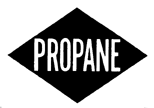Last November, Nicholas Jackson, the transport chief responsible for Cleveland's school buses, found himself in the middle of a battle for business in the niche world of alternative fuels.
Tasked with replacing an aging fleet of diesel-powered buses and saving money, he had to choose the best fuel option for his fleet: either compressed natural gas (CNG), a cheap and clean option that powers fleets of buses and garbage trucks in cities from New York to Los Angeles; or propane, a less-used but simpler fuel that's been gaining in popularity.
He chose propane, and this month the city's Municipal School District finished taking delivery of 49 new propane-fuel buses. The new buses will save the school district about $95,000 a year in fuel costs, based on prices that are about 35 percent lower per gallon, easily offsetting the slightly better mileage diesel gets.
"There was some thought about natural gas," Jackson said, but the cost of building a CNG fueling station, which can top $1 million, and refitting his maintenance facilities with venting in case of a gas leak, proved too expensive. "We wanted to move down the propane route because it was easier to refuel and it was cheaper. Propane is the best alternative fuel to use right now."
Traditionally used to heat homes and fire up barbecues, propane used to be viewed as unlikely to contend with CNG for widespread vehicle use due to its relatively higher cost and the difficulties in transporting the fuel across country. Propane costs $2.43 a gallon on average at private refueling stations, compared to $1.80 for CNG and $3.74 for diesel, according to U.S. government data.
That's starting to change as the fracking energy boom spurs a surge in the production of liquid petroleum gas, including propane, and driving down prices. Propane is a by-product of oil and natural-gas drilling. Read more here.


No comments:
Post a Comment